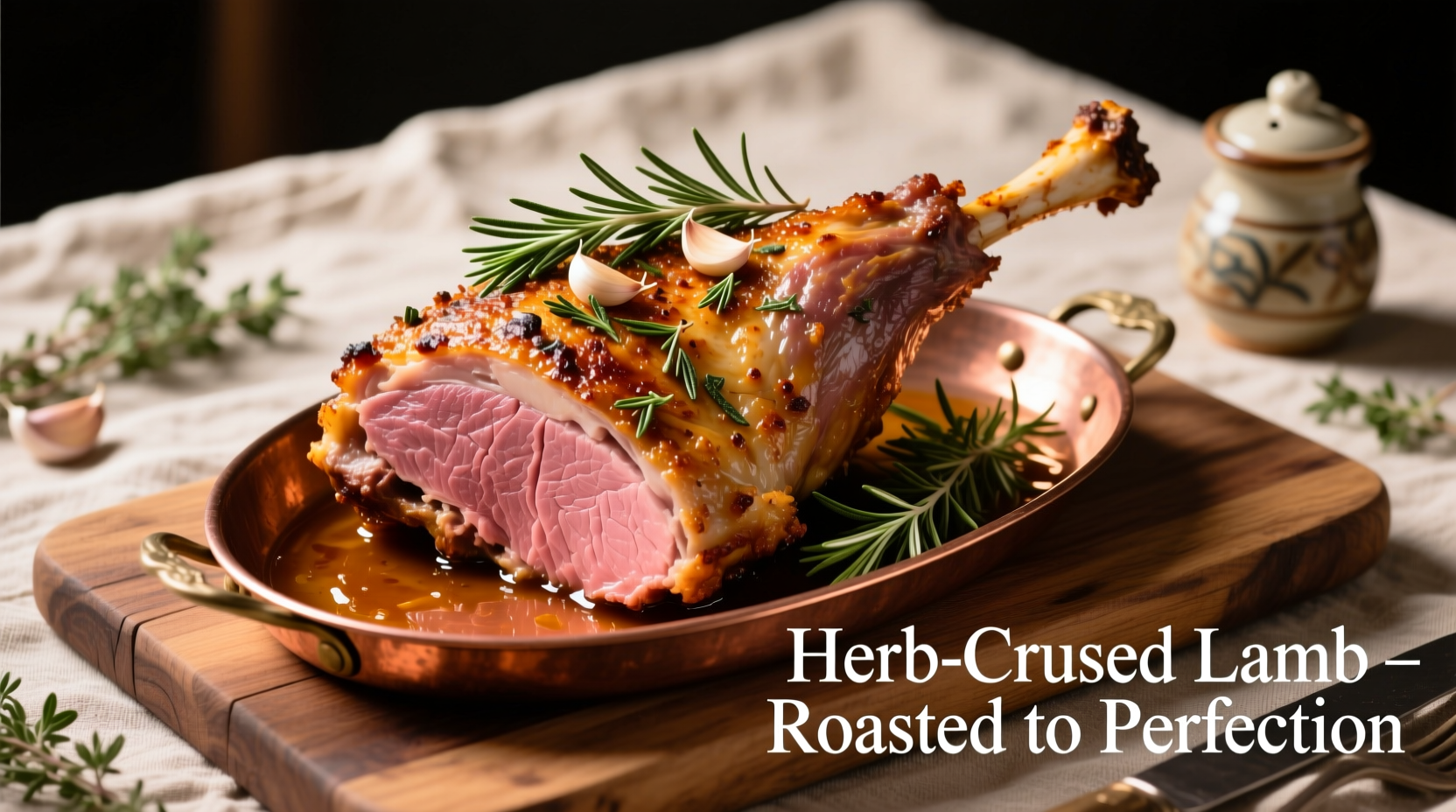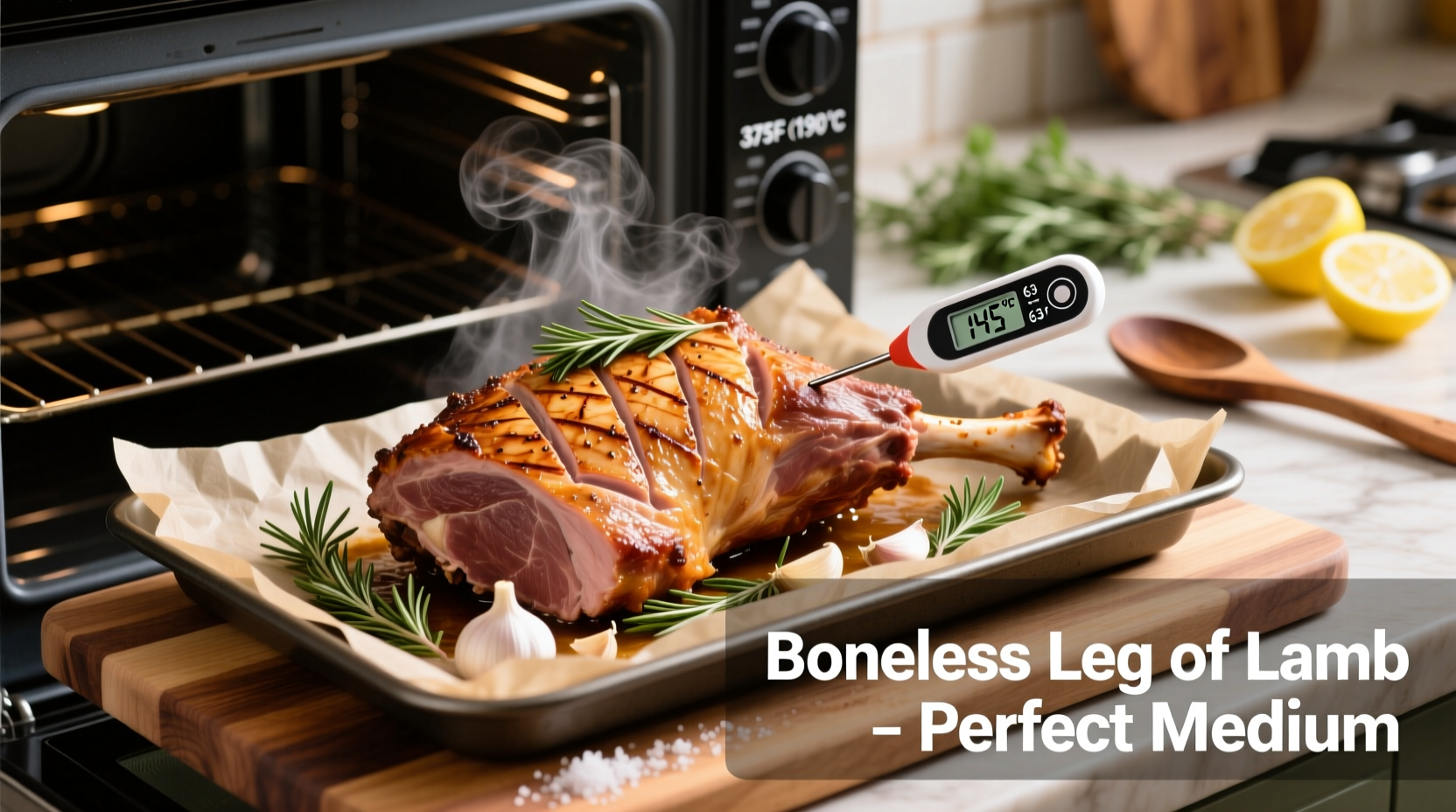For perfectly cooked boneless leg of lamb, roast at 325°F (163°C) for 15-20 minutes per pound until internal temperature reaches 135°F (57°C) for medium-rare. Always rest for 15-20 minutes before carving. This method guarantees tender, juicy results with a flavorful crust every time.
Your Complete Guide to Roasting Boneless Leg of Lamb
Nothing impresses dinner guests quite like a perfectly roasted boneless leg of lamb. This versatile cut offers incredible flavor when prepared correctly, yet many home cooks struggle with dryness, uneven cooking, or lackluster seasoning. After decades of refining techniques across professional kitchens and home stoves, I've developed a foolproof method that transforms this elegant cut into a show-stopping centerpiece.
Why This Method Works
The boneless leg of lamb contains less fat than other cuts, making precise temperature control essential. Unlike traditional bone-in preparations, the boneless version cooks faster and more evenly but requires careful attention to prevent overcooking. Our approach combines dry brining for enhanced flavor penetration, precise temperature monitoring, and proper resting to ensure maximum juiciness.
Preparation: Setting Up for Success
Begin with a 3-4 pound boneless leg of lamb, preferably with the silverskin removed by your butcher. This connective tissue doesn't melt during cooking and creates unpleasant chewiness. If left intact, carefully trim it using a sharp boning knife.
Dry brining is non-negotiable for optimal results. Generously season with kosher salt (1 teaspoon per pound) and refrigerate uncovered for 12-24 hours. This process draws out moisture temporarily, then allows the meat to reabsorb seasoned liquid, enhancing both flavor and texture. The American Chemical Society confirms that dry brining improves moisture retention by up to 25% compared to wet brining for lean meats.
| Doneness Level | Internal Temperature | Visual Characteristics |
|---|---|---|
| Medium-Rare | 130-135°F (54-57°C) | Warm red center, soft to touch |
| Medium | 140-145°F (60-63°C) | Pink center, slightly firm |
| Medium-Well | 150-155°F (66-68°C) | Slightly pink center, firm |
Flavor Development: Building Complexity
Approximately 30 minutes before cooking, bring the lamb to room temperature. Create a paste with 3 tablespoons olive oil, 4 minced garlic cloves, 2 tablespoons fresh rosemary, 1 tablespoon fresh thyme, 1 teaspoon black pepper, and 1 teaspoon lemon zest. Massage this mixture deep into the scored surface.
Professional chefs at the Culinary Institute of America recommend scoring the fat cap in a diamond pattern about 1/4 inch deep. This serves two critical purposes: it allows seasoning to penetrate deeper and helps render fat more evenly during cooking. The scoring pattern also creates more surface area for crust development.

Cooking Execution: Precision Timing
Preheat your oven to 325°F (163°C) - lower than most recipes suggest. This gentle heat prevents the exterior from overcooking before the interior reaches the ideal temperature. Place the lamb fat-side up on a roasting rack in a pan. Insert an oven-safe meat thermometer into the thickest part, avoiding any pockets of fat.
Roast undisturbed for approximately 15-20 minutes per pound. Basting is unnecessary and actually cools the oven each time you open the door. For a 3.5-pound roast, expect 50-70 minutes total cooking time. The USDA Food Safety and Inspection Service confirms that lamb is safe to consume at 145°F (63°C) with a 3-minute rest, though most chefs prefer medium-rare at 135°F.
The Critical Resting Phase: Science Behind the Wait
When you remove the lamb from the oven, an important biochemical process begins. The muscle fibers, tightened during cooking, gradually relax and reabsorb juices. Cutting too soon releases these precious fluids onto your cutting board rather than keeping them in the meat.
Here's the resting timeline that ensures maximum juiciness:
- 0-5 minutes: Surface temperature drops rapidly from 140°F to 130°F
- 5-10 minutes: Internal temperature equalizes throughout the roast
- 10-15 minutes: Muscle fibers fully relax, reabsorbing juices
- 15-20 minutes: Ideal window for carving with optimal texture
Cover loosely with foil to retain heat without steaming the crust. Never skip this step - it's the difference between dry and succulent meat.
Carving and Serving Like a Pro
Use a long, sharp carving knife and slice against the grain in 1/4-inch thick pieces. The boneless leg has a distinct grain pattern running lengthwise; cutting perpendicular to these fibers ensures tenderness. For elegant presentation, arrange slices in a circular pattern on a warm platter.
Pair with roasted garlic mashed potatoes and haricots verts for a classic combination. A simple pan jus made from the roasting drippings, a splash of red wine, and lamb stock elevates the dish without overwhelming the delicate flavor.
Troubleshooting Common Issues
Dry results: Usually caused by overcooking or insufficient resting. Invest in a reliable instant-read thermometer and always rest for the full 15-20 minutes.
Uneven cooking: Ensure your oven temperature is accurate with an independent oven thermometer. Position the roast in the center of the oven for even heat distribution.
Bland flavor: Don't underestimate the power of dry brining. The 12-24 hour salt treatment makes a dramatic difference in flavor penetration.
Alternative Cooking Methods
While oven roasting produces the most consistent results, other methods work well in specific contexts:
- Sous vide: Ideal for precise temperature control (130°F for 24-36 hours), followed by a quick sear
- Grilling: Best for smaller roasts using indirect heat at 325°F with wood chips for subtle smokiness
- Slow roasting: At 275°F for 3-4 hours creates incredibly tender results but lacks crust development
Remember that cooking times vary significantly based on your specific oven, meat thickness, and starting temperature. Always rely on internal temperature rather than time alone for perfect results.
How long should I cook a 4-pound boneless leg of lamb?
Roast at 325°F for approximately 65-80 minutes, or until the internal temperature reaches 135°F for medium-rare. Always use a meat thermometer rather than relying solely on time, as oven temperatures vary.
Should I cover the lamb while roasting?
No, never cover boneless leg of lamb while roasting. Covering creates steam which prevents proper browning and crust development. The roast should be exposed to dry oven heat throughout cooking.
What temperature is best for medium-rare boneless leg of lamb?
Remove the lamb from the oven when it reaches 130-135°F (54-57°C). The temperature will continue rising 5-10 degrees during the 15-20 minute resting period, resulting in perfect medium-rare at 135-140°F.
Can I prepare boneless leg of lamb ahead of time?
Yes, complete all preparation steps except roasting up to 24 hours ahead. Dry brine and apply seasoning, then refrigerate uncovered. Bring to room temperature for 30 minutes before roasting for best results.
Why is my boneless leg of lamb tough?
Toughness typically results from either undercooking (the collagen hasn't properly broken down) or overcooking (the muscle fibers have tightened excessively). For boneless leg, aim for 135°F internal temperature and always rest for 15-20 minutes before carving.











 浙公网安备
33010002000092号
浙公网安备
33010002000092号 浙B2-20120091-4
浙B2-20120091-4